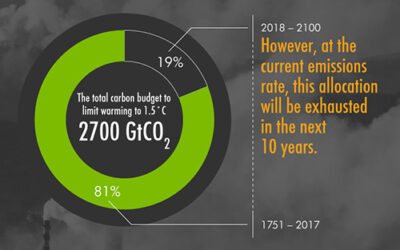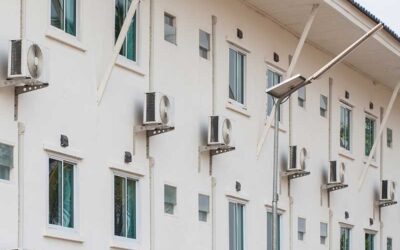Bringing economic and energy efficiency priorities together in a post-pandemic world


The COVID-19 crises have put to the forefront grave challenges that are not just limited to the healthcare sector. Along with a staggering public-health turmoil, the economic repercussions of the pandemic have been alarming in the country with the contraction of GDP in Q1 of 2020 by 23.9% and the loss of jobs in April with the announcement of lockdown has been estimated to be at an alarming high of 122 million. India’s unemployment rate currently stands at 27.1%, according to the data released by Centre for Monitoring the Indian Economy (CMIE).
To cope up with the ensuing economic downturn, the Government of India announced a stimulus package worth INR 20 lakh crore in May 2020. While the government designs stimulus measures and introduces structural reforms, it presents a unique window of opportunity to strategically realign India’s development plans with the climate and environment objectives. As policymakers inject liquidity to stimulate the aggregate demand in the economy, streamlining the flow of funds to the energy efficiency and cooling sectors can help foster economic as well as environmental gains.
Buildings are the second-highest energy-consuming sector in India, after industry and constitute around 33% of total energy consumption. Approximately 60% of the stock is yet to build, and in this context, the new construction must be constructed efficiently to contain the energy consumption and CO2 emissions of the buildings sector. Similarly, an evaluation of the current cold-chain infrastructure shows that around 90% of the cold-chain infrastructure is yet to be built to manage, store and preserve the agricultural produce adequately. These factors point to the fact that there is an ample opportunity for the country to strategically manage the growth of its upcoming infrastructure in a way that is energy-efficient and sustainable.
A green economic recovery that encompasses investment of funds in the construction of energy-efficient buildings, rolling out of energy-efficient appliances and setting up of a robust, energy-efficient cold chain for the agriculture sector fares well on multiple indicators.
Firstly, every $10 million spent in energy efficiency can help create 77 jobs. This number is approximately triple the job creation potential that fossil fuels offer, which is estimated to be around 27 jobs.
Secondly, government spending in energy efficiency stimulus measures would help spruce up the overall economic recovery as energy efficiency stimulus measures have a multiplier effect of around 2.
Thirdly, it is an opportunity for policymakers to transition the economy in a way that also helps achieve the Sustainable Development Goals (SDGs), as well as India’s commitments under the Paris Agreement and the Kigali Amendment to Montreal Protocol.
India’s Stimulus Package: Cold Chain, Affordable Housing Sector and Need for Energy Efficiency
India has a reasonably robust institutional framework that could ease the roll out the energy efficiency policy measures. Several existing government policy initiatives such as Affordable Housing, Doubling Farmers’ Income, Make in India, lend a strong underpinning for implementing the energy efficiency as part of the overall stimulus package. The government has announced INR 1 lakh crore (USD 13.18 billion) Agri Infrastructure Fund for farm-gate infrastructure for farmers. The investment will also focus on lack of adequate cold chain and post-harvest management infrastructure in the vicinity of farm-gate causing gaps in value chains. Under affordable housing, INR 70,000 crore (USD 9.2 billion) will be invested to boost the housing sector and middle-income group through the extension of Credit Linked Subsidy Scheme (CLSS). The stimulus package will facilitate job creation and will stimulate demand for various resources like steel, cement, transport and other construction materials and appliances. The stimulus package also presents a tremendous opportunity to integrate energy efficiency in building and cold-chain.
Focusing on energy efficiency in the cold-chain, per India Cooling Action Plan (ICAP), the overall power consumption in the cold chain can be reduced up to 8-12% by employing energy-efficiency measures such as efficient design, efficient appliances (cooling and refrigeration appliances), pressure regulation valves for evaporator and condenser, electronic expansion valve, adequate insulation, high-speed roll-up doors, air-curtains, and variable-frequency drive (VFD) for compressor & fan control and choice of low GWP refrigerants.
Eco Niwas Samhita (ENS) launched by BEE in 2018, focusses on limiting the heat gain inside the building by improving the thermal performance of building envelope comprising of Wall, roof and glass. The reduction in heat gain enhances the thermal comfort as the number of degree discomfort hours (considering the building is naturally ventilated) gets reduced with heat gain reduction. In case the building is partly or fully air-conditioned, cooling demand gets reduced, which in turn drives the reduction in energy consumption. As per BEE, implementation of ENS will have the potential for energy savings to the tune of 125 billion units of electricity per year by 2030, which is equivalent to about 100 million ton of CO 2 emission.
The way forward
List of measures targeting energy efficiency in affordable housing and cold-chain segments that can stimulate economic recovery and job creation while ushering into a more energy-efficient and environmentally sustainable future include:
- Target thermal comfort for all and energy efficiency improvement for affordable houses.
- Unlocking the tapped potential of energy efficiency in the building sector by retrofitting of existing buildings and energy-efficient design, construction and commission of new buildings.
- Investing in the creation of a robust and sustainable supply chain to minimize food waste and maximize farmers income.
- Strengthening of weak grid areas in India to ensure continuous supply chain in the agriculture sector.
- Introduction of subsidies or tax reduction measures for the uptake of energy-efficient appliances
- Development of innovative business models to create and sustain the market for energy-efficient buildings and cold chain infrastructure.
- Localize the manufacturing of energy-efficient solutions to create more employment opportunities in the sector
This blog has been written by Research Associate, Simrat Kaur, with inputs from Program Lead (Building & Appliances) Tarun Garg.




